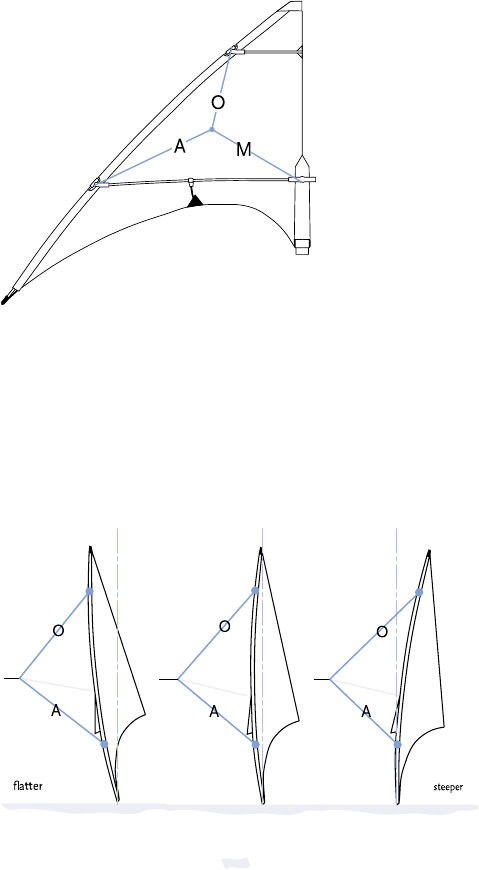User manual

13
Bridle Adjustment
Although HQ kites are adjusted correctly at the factory and hardly ever need
to be re-adjusted you should still know how to adjust a bridle.
You should make small, incremental adjustments to the bridle. A 5 mm
change often has a significant effect. Ensure that the markings made at the
plant are always retained so that you can always move back to a safe setting!
Whatever you do on one side of the bridle you must also do the same on the
other side. Make sure you achieve a symmetry, pull the bridle to the inside
and out, use your fingers to measure distances.
Standard Three-Point Bridle
First loosen the lark's
head knot on the bridle
point and move the
marking upwards out
of the knot. The kite
nose now points
further backward. Make
sure the lark's head
knot is tightened again.
The above instruction
has the effect of setting
the angle of the kite
steeper. Now it
needs more wind
pressure to fly.
However, it reacts
more quickly, pulls
more and has a greater
tendency to fly out of
control during stunts,
while flying more slowly in straight flight. If you set the marking below the
bridle point, the kite nose points a little further forward. Don't forget to do
the same on the other side and to check the symmetry. The kite is now
adjusted to a flat setting. This setting - up to a certain point - lets most
kites fly in less wind, but it also influences the capacity to fly curves. The kite
reacts more slowly to steering commands, it has less pull and feels more
spongy. This is a good setting for strong winds, because the kite pulls less
but flies more quickly.










